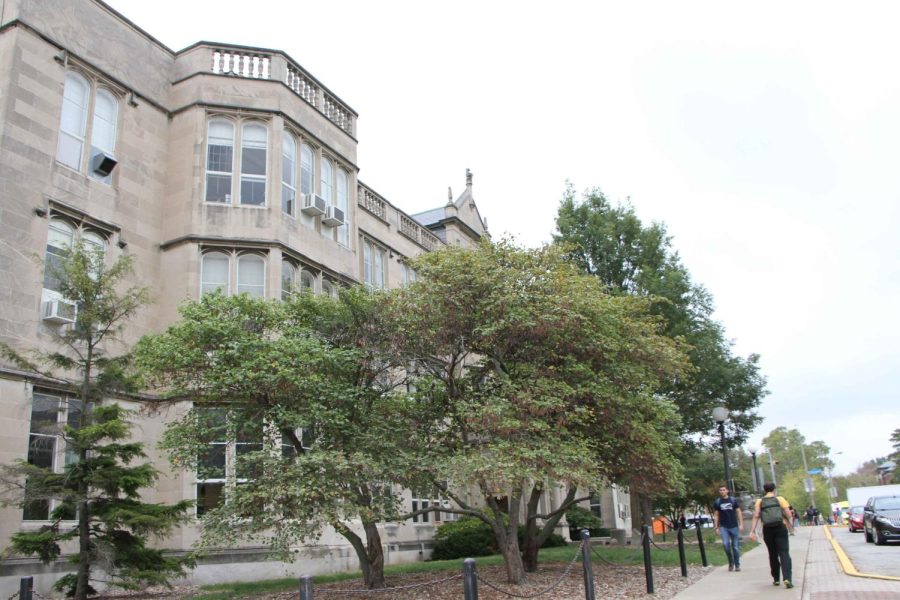Opinion | UI’s disconnection from CU enables gun violence
University High School, located on Springfield Ave. in Urbana, is one of a few local high schools within the C-U. Columnist Diamond Walker argues that the University is disconnected from the rest of the community in trying to make Campustown perfect.
March 4, 2022
Since 1867, the University has earned a reputation as a world-class leader in research, teaching and public engagement. In 2021, Champaign-Urbana was ranked by Livability amongst the top 10 best college towns in America.
While some community members argue campus is a utopia, others assert the community is far from perfect. Although we interact and live in the same community, there is a disconnect in local experiences. One area where there this disconnection flares is safety in the area.
Gun violence has been growing at exponential rates in the community. In Champaign alone, there were 61 shootings in 2017, 100 shootings in 2019 and 234 reported shootings in 2021.
The majority of these incidents are occurring in the same neighborhoods: communities of color. In addition to gun violence, these communities also face racism, discriminatory policies and economic hardships that worsen gun violence’s impact.
There is little to no coverage notifying students of these disparities due to the community disconnection. It appears the University prioritizes building and bettering Campustown aesthetics while detaching itself from C-U. For instance, a student’s drive to Walmart features gentrified neighborhoods — meanwhile, local neighborhoods require our help.
Get The Daily Illini in your inbox!
It’s time for the University to reach out and stand in solidarity with its community members. As students, it is vital to understand the community we live in. The problem has nothing to do with us until it shoots by.
We become frustrated and confused when these shootings invade our fantasy Campustown-utopia. It is now time for us to become knowledgeable and proactive in the fight to reduce gun violence.
Root causes requiring our attention towards gun violence are under-resourced public services, underperforming schools and the lack of opportunity and hopeless perceptions. As a recent local high school graduate, gun violence has already changed school culture. Before, school was school; today, metal detectors greet students and violence threatens education.
There has been great growth in interpersonal violence amongst the Champaign youth. This violence divides the fantasy Campustown from the real community.
Local students lack the appropriate knowledge of the University’s prestige and achievements. From a lack of resources and outreach programs, community and university members do not live in the “same” community.
The University has been working proactively to make campus diverse and inclusive. Today, the University should take part in saving local youth while making the community and campus safer.
As a campus, we should feel compelled to have a mission to better the community we are housed in. Creating outreach programs specifically targeting local students of color with economic constraints is the first step in this mission.
On Feb. 15, the city of Champaign approved a $3 million gun violence reduction blueprint. The University’s contribution to this action was primarily through social and behavioral science research. The University contributing outreach programs along with other behavioral science research would have a tremendous impact on this community and tomorrow’s leaders.
The chancellor’s office has stated its commitment to partner with the community to address local safety and violence intervention activities. These commitments must create outreach programs that target local at-risk students — the same now being greeted by metal detectors.
These outreach programs should engage local students academically, environmentally and culturally. Moreover, by mentoring and connecting with these disconnected faces, students can begin to feel hopeful once again.
Diamond is a junior in LAS.







